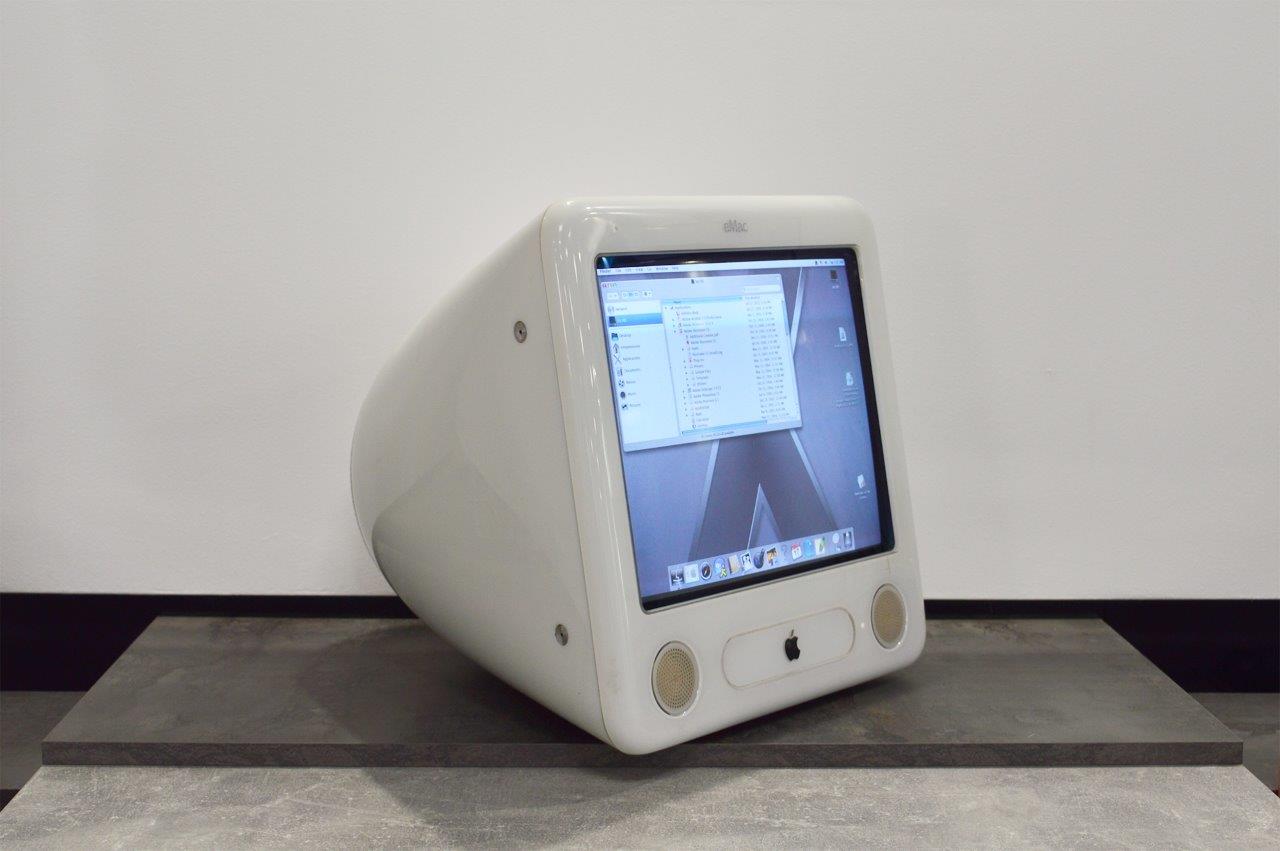
Today marks the 20th anniversary of Apple introducing the eMac, designed specifically for educational use in classrooms and computer labs.

eMac via Hellenic IT Museum
Priced at $999 in the United States, the original eMac featured a white enclosure with a 17-inch flat-faced CRT display, a 700 MHz PowerPC G4 processor, 128 MB of RAM, a 40 GB hard drive, five USB ports, two FireWire ports, two speakers, and a built-in CD-ROM drive. An upgraded model with a faster 56K internet modem was available for $1,199.
"Our education customers asked us to design a desktop computer specifically for them," said Steve Jobs, in April 2002. "The new eMac features a 17-inch flat CRT and a powerful G4 processor, while preserving the all-in-one compact enclosure that educators love."
Relay FM co-founder Stephen Hackett today shared a great video about the eMac's history:
The original eMac shipped with Mac OS X version 10.1.4, known as "Puma," and it came preinstalled with Microsoft's Internet Explorer. Apple's own web browser Safari was announced in early 2003, months after the eMac launched.
Citing strong consumer demand, Apple made the eMac available to all customers in June 2002.
"Consumers have pounded on the table demanding to buy the eMac, and we agree," said Jobs. "The eMac's production ramp is ahead of schedule, so we'll have enough eMacs this quarter to satisfy both our education and non-education customers."
Apple went on to release additional eMac configurations with upgraded specs and a SuperDrive. In October 2005, the eMac became limited to educational institutions only again, and the eMac was replaced by a low-end 17-inch iMac in July 2006.
Article Link: 20 Years Ago Today, Apple Unveiled the eMac
- Article Link
- https://www.macrumors.com/2022/04/29/emac-turns-20/
Last edited:

